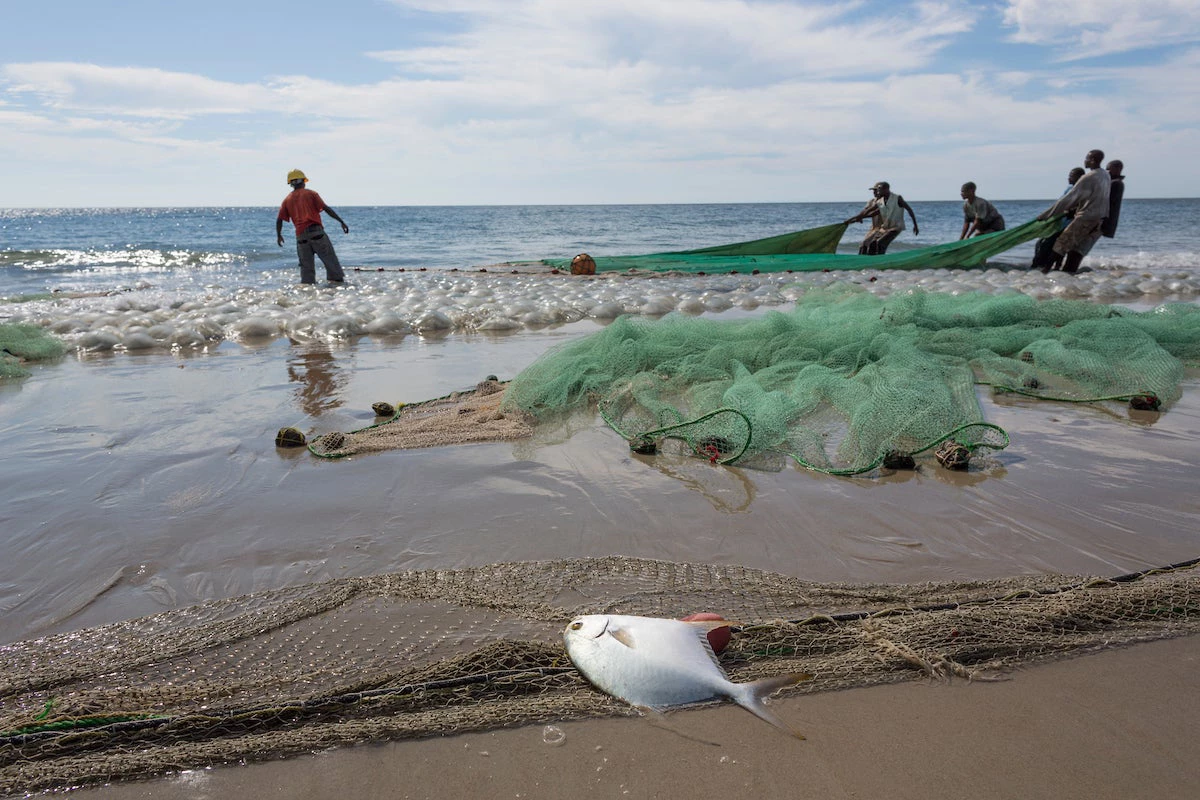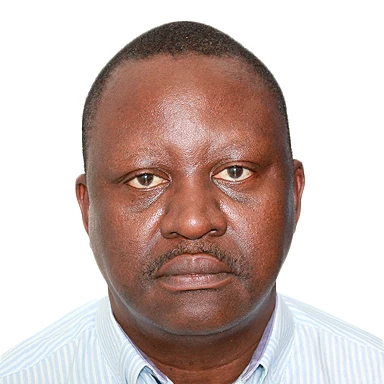 Fishermen along Mozambique’s extensive coastline pull in their day’s catch. Fisheries co-management holds substantial promise but can also be challenging—lessons from projects such as FishCC are crucial is adapting and molding activities that suit specific fishing communities. Credit: World Bank
Fishermen along Mozambique’s extensive coastline pull in their day’s catch. Fisheries co-management holds substantial promise but can also be challenging—lessons from projects such as FishCC are crucial is adapting and molding activities that suit specific fishing communities. Credit: World Bank
In the small fishing community of Inhassoro along Mozambique’s central coast, Eulalia Fernando Baptista spends much of her time selling fish at the local market and gathering small fish and shellfish along the shore. Like most people in Mozambique’s rural coastal areas, fishing is part of daily life and her family rely on the ocean for nutrition and income. But Baptista says they capture a lot less fish today than a few years ago.
With climate change already impacting daily life and global fish populations on the decline, communities like Inhassoro face losing a critical part of their livelihoods. Worldwide, the percentage of stocks fished at biologically unsustainable levels tripled - from 10 percent in 1974 to 33.1 percent in 2015. Nearly 60% are fished at the maximum sustainable level.
In recognition of World Fisheries Day on November 21, the Integrated Landscape Management Portfolio team in Mozambique would like to share how Baptista and her community are mitigating and adapting to these threats, as well as four lessons we’ve learned about how community empowerment and the co-management of fishing areas can change the ways in which we manage local and regional fisheries. This means working with local communities to create (or revive) community fishing councils (CCPs) that devise and implement their own fisheries resource management plans. This approach gives local people control over how their fisheries are managed, including defining no-take reserves and catch limits, rather than the typical top-down approach that local people feel less attached to.
Baptista is a member of her local CCP and one of over 2,700 participants in the Mozambique Artisanal Fisheries and Climate Change Project (FishCC)—a Government of Mozambique-led initiative and part of the World Bank’s Integrated Landscape Management Portfolio in Mozambique. Active between 2015–2019, FishCC focused on strengthening the local management of coastal resources by supporting fisheries’ councils and small-scale fishers—who currently produce 85% of Mozambique’s annual catch. One of the project’s greatest accomplishments was supporting the strengthening of these councils, which have demonstrated that co-management and community empowerment can be the catalyst to effective sustainable fisheries management.
FishCC promoted co-management by increasing awareness about local coastal ecosystems and the impact that community actions have on the health of the environment (specifically fish populations) and livelihoods. The project encouraged people to move away from destructive fishing methods and instead meet in person (in a place where they were comfortable) and together design with the authority’s management plans that help to sustainably manage local resources.
The co-management approach encountered several challenges—due in large part to a lack of regulation to support community participation and poor coordination between stakeholders—the process garnered several worthwhile lessons (a full report to be released shortly). As the World Bank introduces co-management into more areas through the SWIOFish1-MZ project, we’d like to share the following lessons:
1. Fishing communities need support to diversify livelihoods and increase financial resilience.
It is crucial that communities have the support needed to maintain livelihoods during the transition from open access fisheries to controlled, community-led resource management. This means helping families secure their incomes and diversify livelihoods through initiatives such as savings clubs, matching grants and vocational trainings like carpentry, electricity and sewing. These complementary activities not only improve financial security but also reduce pressure on fisheries resources.
FishCC found Credit and Savings Clubs to be particularly successful in working with women and youth who often lack employment opportunities and consider the sea as their economic buffer, thus further increasing pressure on fishery resources. For women, like Baptista, whose income relies on fish resources, the savings clubs allow members to increase domestic and business assets and save money for expenses related to education and health. Additionally, these clubs build trust and social cohesion in fishing communities that in turn help to sustain co-management after the project cycle ends.
2. Trust and consistency form the base of community engagement.
Dedicated extension support and consistent engagement on the ground are crucial to gain community trust and willingness to be involved in fisheries management. A truly grass-roots approach facilitates consensus in decision making and conflict resolution, and changes mindsets in adopting more sustainable fishing practices. Low-cost outreach methods such as regular community visits, easy-to-use monitoring tools to record local information and feedback from the CCPs, and engaging communication methods—like school visits and community radio—in the local language, all helped to build trust in the co-management approach.
3. Strong Legal Frameworks are key
Institutional and legal frameworks must clearly outline the procedures for community involvement and the legal status for co-managed areas. FishCC found that without this formal framework, it was hard to get buy-in from the various authorities and momentum was quickly lost with communities who could benefit from co-managed areas.
4. Good coordination between all stakeholders is vital
Coordination between regulatory management agencies, fisheries research institutions, local government and communities should be done from the outset. Strong coordination is needed every step of the way, from identifying the breeding groups and species that need strengthened management or rebuilding plans to supporting CCP capacity building and drawing up co-management plans.
While these lessons are not exhaustive, they show that the effectiveness of co-management largely depends on trust and shared knowledge, strong legal and regulatory frameworks, capacity building, coordination between all stakeholders and decision makers, and financial resilience and the availability of alternative incomes.
In conclusion, to maintain healthy marine ecosystems we need to listen to and empower those who depend on fisheries the most.




Join the Conversation